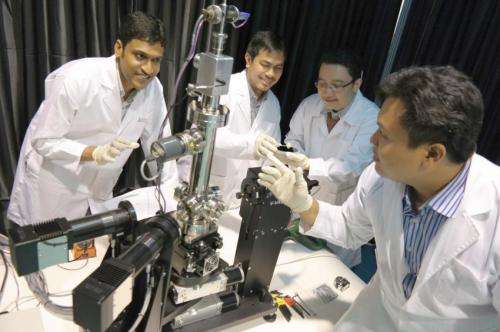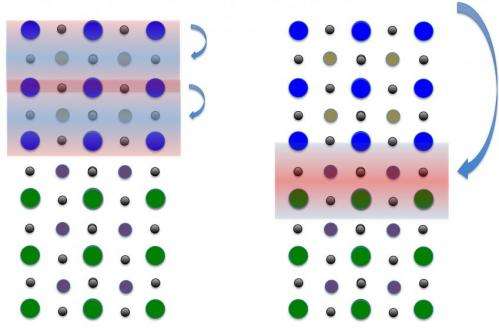Novel technique opens door to better solar cells

A team of scientists, led by Assistant Professor Andrivo Rusydi from the Department of Physics at the National University of Singapore's (NUS) Faculty of Science, has successfully developed a technique to study the interface between materials, shedding light on the new properties that arise when two materials are put together.
With a better understanding of how materials interface, scientists can tweak the properties of different materials more easily, and this opens doors to the development of better solar cells, novel superconductors and smaller hard drives.
The team's research findings were first published in scientific journal Nature Communication on 14 April 2014.
Solving mysteries in condensed matter physics
Some of the most exciting condensed matter physics problems are found at the interfaces of dissimilar materials.
"If you put two materials together, you can create completely new properties. For instance, two non-conducting, non-magnetic insulators can become conducting and in some cases ferromagnetic and superconducting at their interface," explained Asst Prof Rusydi. "The problem is that we do not fully understand what is happening at the interface yet."
To resolve this long-standing mystery in the physics of condensed matter, the NUS scientists investigated the interface between strontium titanate and lanthanum aluminate, two insulators that become conductors at their interface. In doing this, the team uncovered another mystery.

"For this interface, a theory predicts that the conductivity should be tenfold higher than what is observed. So, 90 per cent of the charge carriers - the electrons - are missing. It is a complete mystery to us why this happened," said Asst Prof Rusydi.
To search for the missing electrons, the scientists employed high-energy reflectivity coupled with spectroscopic ellipsometry. They utilised the bright synchrotron radiation source at the Singapore Synchrotron Light Source at NUS and Deutsches Elektronen-Synchrotron and floodlighted the interface of the two materials with a wide energy range.
The absorption of synchrotron radiation at specific wavelengths revealed the energy state of the corresponding electrons and unveiled their hiding place in the crystal lattice. It was found that only about 10 per cent of the expected electrons are free to migrate to the interface of the two materials to form a conduction band. The remaining 90 per cent are bound in the molecular lattice at higher energy states that were not visible to light sources used in earlier searches.
"This came as a surprise," said Asst Prof Rusydi. "But it also explains why more than just one layer is necessary to fully unfold the interface properties."
He further elaborated, "All the electrons in the material are like small antenna that respond to electromagnetic radiation at different wavelengths, depending on their energy state. If only a part of the electrons migrate to the interface, you need a bigger volume to compensate for the symmetry breaking."
Further research to better understand interfaces
The technique developed by the NUS scientists is the start of their investigation on the basic interface characteristics among materials. The team expects that with a better understanding of interfaces, their properties can be more easily tweaked to desired characteristics.
In the next step of their research, Asst Prof Rusydi and his team will study the interfaces between other materials. They are also working on building a new and unique floodlight facility at the Singapore Synchrotron Light Source in NUS to be used in their research to reveal quantum properties at the interfaces of complex systems.
More information: "Mechanisms of charge transfer and redistribution in LaAlO3/SrTiO3 revealed by high-energy optical conductivity"; T.C. Asmara et al.; Nature Communications (2014); DOI: 10.1038/ncomms4663
Provided by National University of Singapore


















